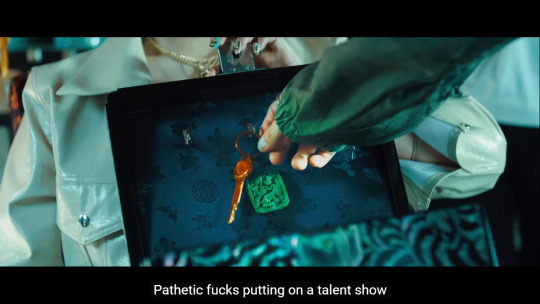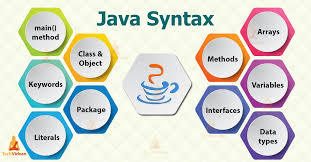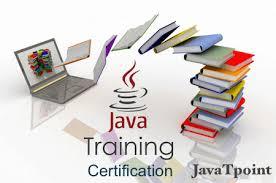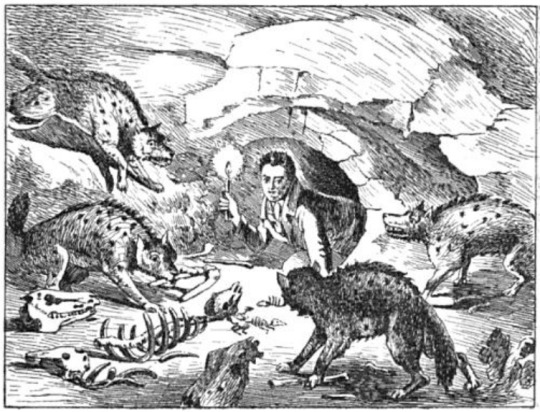#Advanced Visualization Market Demand
Explore tagged Tumblr posts
Text
The Evolution and Revolution of Agust D 2016-2023
Before I get to talking about ‘Haegeum,’ we need to look at the birth of Agust D from Yoongi’s first mixtape by the same name in 2016.
When we first meet Agust D, he’s presented as a scrappy underdog bound in a moving motorhome, but he slowly breaks free over the course of the ‘Agust D’ MV.


This first version of Agust D is characterized by his anger at those who have wronged or looked down on him, his ambition, and his greed. His ambition and greed are apparent just in the title of his follow up track ‘give it to me’.
The MV for ‘give it to me’ is also a continuation of ‘Agust D’ where he’s fully succeeded in breaking free from his bonds and captivity.

Yoongi has also stated (in a live after the release of D-2) that another name for blond Agust D is anger.

But equally important to note is how this first, blond version of Agust D, who I’ll call Agust D-1 from here on, is in the process of rising up from the bottom to overcome, or overthrow, those that tried to keep him down just because he’s an idol rapper.
Using military metaphors he so fond of, he’s a “new recruit” enacting “insubordination” or a “mutiny” against the older rappers in the underground scene.
‘Daechwita’, released with Yoongi’s second mixtape D-2, follows a similar narrative. He’s still calling out his detractors in the lyrics, except now he’s risen “from origins of a slave to become a king” and no longer the underdog he was.

Even the title and sample of traditional Daechwita military music is announcing the arrival of this king with familiar blond hair and a fresh scar over his eye.
Except, despite the lyrics, the MV still tells the story of an underdog rising up to overthrow the corrupted power at the top.
The original blond Agust D-1 has become the villain, mad with his own power, demanding total submission of those under him, and rapidly collecting the heads of anyone who opposes him.
And this is when we meet Agust D-2 with black hair and a scar to match the King’s.

He becomes our new underdog and the revolutionary narrative becomes one of a struggle within Yoongi’s own self, to overcome the tyranny of ‘Anger.’ Just like Agust D-1 from the ‘Agust D’ MV, he has his own bonds to break free from.


One interesting thing I observed, before we move on from ‘Daechwita,’ is that Agust D-2 is associated with newer technology than Agust D-1. It signals that Agust D-2 is the natural successor, the next generation.
The setting of the MV and Agust D-1′s palace appears to be the Joseon dynasty, but there are a few exceptions to this brought in by Agust D-2, like the Jade key-ring and the car.


Even their weapons of choice are telling. Agust D-1′s weapon is a sword:

But as a newer iteration of himself, Agust D-2 is more technologically advanced and his weapon of choice is a gun.

Agust D-2 uses the gun to shoot the mad king and presumably succeeds in overthrowing him in this succession of power.
Phew, ok. Are you still with me? On to ‘Haegeum’.
‘Haegeum’ is even more explicitly about breaking free from what binds us. The title itself, while it can mean the traditional Korean instrument, also means the lifting of a ban or what has been forbidden. Yoongi references this in lyrics like, “liberation from all that’s forbidden” and when he explicitly states, “this song's simply about freeing what's forbidden.”
The visual and thematic parallels between ‘Daechwita’ and ‘Haegeum’ also make clear that this overthrowing of a corrupted power at the top is a repeating cycle. We even get Jungkook’s chicken in both market scenes!


Okay, the chicken probably isn’t that thematically important, but it’s fun. And Jungkook was really cute with that chicken behind the scenes.

We also see the return of Agust D-2, marked by his fading scar, but instead of the underdog revolutionary he was in ‘Daechwita,’ he has now risen to the top of the police force and been corrupted. The money our new underdog Agust D-3 steals at the beginning is clearly his with how invested Agust D-2 is in its retrieval. Several of his shots mirror those of the mad king from ‘Daechwita,’ making his corruption and this association clear.


Agust D-3 is our new protagonist and he has his own share of parallels with Agust D-2 from ‘Daechwita’ as well. He doesn’t overthrow the corrupt authority at the top alone. In both instances, he gets help from the other people under the corrupt authority: the butcher/executioner in ‘Daechwita’ and one of the gang members in ‘Haegeum.’


They both make eye contact with our revolutionary early on in the MVs and by the end are revealed to have been working with him all along when instead of following orders and killing our protagonist they sneak him the gun that kills the corrupt authority at the end.


But I have hope that Agust D-3 will be able to break free from this cycle of rising to power and then becoming corrupted. The reason for this hope is ‘Haegeum’s’ lyrics.
We’re told explicitly to “differentiate between freedom and self-indulgence” because there are limits to freedom and it becomes an issue when one person’s self-indulgence infringes on another person’s freedom. That’s the real issue with these corrupted authority figures doing whatever they want: they’re hurting the people under them and impeding their freedoms.
So what makes Agust D-3 different?
Well, at first not much. He is in fact very self-indulgent as he murders, steals, smokes, and generally does whatever he wants. This is how he comes into conflict with Agust D-2 as both of their greed starts to restrict the other, “putting shackles on each other.”
But there’s a turning point when they come face to face. Agust D-3 takes the cigarette (a symbol of self-indulgence) from Agust D-2′s lips and looks like he’s considering smoking it himself.


But instead of smoking it, he does the unexpected and throws it into the stacks of stolen money, which are symbolic of the greed and capitalism that shackled him, and burns it all, freeing himself from the hold it had on him.

Agust D-2 is not free from this greed, however, so when he sees the money he’s trying to retrieve go up in flames, he takes out his anger on Agust D-3 (making him even more like the violent and angry Agust D-1).
But because Agust D-2 is still blinded by greed and anger, Agust D-3 is able to shoot and overthrow him in the end (in another parallel scene with ‘Daechwita’).
We see the full arc of Agust D-3′s growth when he returns to the restaurant where this chain of events all began, and he orders a single bowl of noodles.

He uses the chopsticks, which were previously his murder weapon, to eat the noodles as they were intended to be used. He’s still participating in the system in place, because we all need to eat at the end of the day, but it’s different. It’s not the exploitation of the system for self-gain that Agust D-2 was engaged in as a corrupt police official, and it’s not the unfettered destructive self-indulgence Agust D-3 displayed at the beginning of the MV either.
To be free it might be necessary to participate in the system to a certain extent, but what’s really important is to continue questioning it. That’s the challenge Agust D-3 seems to be giving the audience with his look at the end.

But with the hair falling over his eye in this shot, resembling the scar that marked the past two Agust Ds, perhaps it’s more ambiguous than that. Maybe he too will eventually fall to corruption. Maybe we all have that corruption in us and we have to continually struggle against it.
Either way, ‘Haegeum’ is a thought-provoking, cinematic masterpiece, and I hope you enjoyed this post where I tried to put all my thoughts together.
Note: I haven’t mentioned ‘Amygdala’ in this overview of the Agust D trilogy, because I think the story of that song is slightly separate (it’s much more tied to personal events in Yoongi’s life). The one thing I do think is relevant from ‘Amygdala,’ though, is that the scar is self-inflicted. From what I’ve seen Yoongi say about it, the scar seems to signify the self-inflicted wounds following trauma that lead to our corruption, but I’m not entirely sure.
(credit to https://muish.wordpress.com and https://doolsetbangtan.wordpress.com for translations as well as all official MV translations)
40 notes
·
View notes
Text
Unlocking Growth Potential: Harnessing the Power of Market Intelligence
Unlocking Growth Potential: Harnessing the Power of Market Intelligence
Introduction:
In today's highly competitive business landscape, gaining a competitive edge and driving sustainable success requires a deep understanding of market dynamics. This is where market intelligence comes into play. In this blog post, we will explore the pivotal role of market intelligence in empowering businesses to make informed decisions, seize opportunities, and stay ahead of the curve.
Defining Market Intelligence: Market intelligence involves the systematic collection, analysis, and interpretation of data related to market trends, customer behavior, competitor strategies, and other crucial factors influencing business performance. It provides organizations with valuable insights that aid in strategic decision-making and identifying areas for growth.
The Importance of Market Intelligence: a. Unveiling Market Trends: Market intelligence allows businesses to stay updated on industry trends, emerging technologies, and changing customer preferences. By analyzing this data, organizations can proactively adapt their strategies to meet evolving market demands.
b. Competitor Analysis: Understanding competitor strategies, strengths, and weaknesses is vital for success. Market intelligence provides valuable insights into competitor positioning, product offerings, pricing, and marketing tactics. This information enables businesses to refine their own strategies and differentiate themselves in the market.
c. Customer Insights: Market intelligence helps organizations gain a comprehensive understanding of their target audience. By analyzing customer behavior, preferences, and feedback, businesses can tailor their products, services, and marketing efforts to better meet customer needs, resulting in enhanced customer satisfaction and loyalty.
Leveraging Market Intelligence: a. Data Collection and Analysis: Market intelligence relies on robust data collection from diverse sources such as industry reports, surveys, market research, and social media monitoring. Analyzing this data using advanced tools and techniques enables businesses to extract meaningful insights.
b. Identifying Opportunities: Market intelligence helps organizations identify untapped market opportunities and niches. By analyzing market gaps, emerging trends, and customer pain points, businesses can develop innovative products, enter new markets, or refine existing offerings.
c. Risk Mitigation: Market intelligence also helps organizations anticipate and mitigate potential risks. By monitoring market fluctuations, regulatory changes, and competitor activities, businesses can proactively adjust their strategies to minimize risks and maximize opportunities.
Implementing an Effective Market Intelligence Strategy: a. Clearly Define Objectives: Define the specific goals and objectives of your market intelligence initiatives. Determine the key areas of focus, such as competitive analysis, market trends, or customer insights, to align your efforts accordingly.
b. Invest in Technology: Leverage technology tools and platforms that streamline data collection, analysis, and visualization. Automation and data analytics solutions enable businesses to process large volumes of data efficiently and extract actionable insights.
c. Continuous Monitoring and Adaptation: Market intelligence is an ongoing process. Regularly monitor market trends, competitor activities, and customer feedback to stay agile and respond swiftly to changes. Adapt and refine your strategies based on the insights gained through market intelligence.
Conclusion: In today's fast-paced and competitive business environment, market intelligence serves as a powerful tool for organizations seeking growth and success. By embracing market intelligence, businesses can make informed decisions, uncover new opportunities, and gain a competitive advantage. By prioritizing market intelligence as an integral part of their strategy, businesses can unlock their true potential and thrive in an ever-evolving marketplace.
3 notes
·
View notes
Link
#Advanced (3D/4D) Visualization Systems Market#Advanced (3D/4D) Visualization Systems Market trends#Advanced (3D/4D) Visualization Systems Market Size#Advanced (3D/4D) Visualization Systems Market Growth#Advanced (3D/4D) Visualization Systems Market Demand
0 notes
Text
Top PGDM Specializations at Top B- Schools in India
There are additional PGDM courses available, such as a PGDM in international business. International business courses are typically time-consuming, but a PGDM in it can be a significant time saver. You can learn more about the courses and enroll in the finest B school for you.
For your convenience, we have listed the best of them in the blog below.
PGDM In Digital Marketing
In the commercial world, digital marketing has expanded significantly. This is because the world has migrated online, and most planning and scheming take place online. Pursuing a PGDM in digital marketing will provide you with numerous options to advance in the professional sector.
This course is ideal if you want to learn about content production and marketing, digital channels, social media marketing, search engine and social media optimization, digital marketing analytics, and other topics.
PGDM In Business Analytics
This specialty is a fantastic choice if you are interested in analytics and research. Machine learning and data visualization models, artificial intelligence, data analytics, big data, and other topics are covered. Because business analysis has developed as a vital component of a business, professionals in this discipline are in high demand.
There are numerous reputable PGDM colleges around India like the ITM group of institutions from which to choose. However, make certain that these business schools are governed by the AICTE.

PGDM Marketing
It is concerned with understanding existing client demands and formulating corporate goals based on them. This is another specialist course that will provide you with fantastic employment chances as well as high compensation. This specialization at the ITM group of institutions is ideal for those who are extroverted, passionate, and enjoy solving problems in novel ways. The specialty covers B2C, B2B, channel management, market research, marketing analysis, and other topics.
PGDM In Human Resources
This specialized course at the ITM group of institutions is for those who are interested in managing an organization's resources and preserving its structure. The most important role of an HR professional is to assist firms in getting the most out of their people. Human resources departments include talent acquisition, remuneration and reward management, employee support, labor law and industrial relations, and others.
An HR manager's responsibilities also include overseeing the administration of the organization's policies, programs, and policies, as well as their development and implementation.
PGDM In Finance
Finance is a critical component of any organization, and they require someone to manage their finances. This field pays well and allows you to play an important part in the business. This course is for you if you have a great grasp of mathematics and enjoy examining financial resources, among other things.
You can learn more about the ITM group of institutions' course admissions at their website.
3 notes
·
View notes
Text
Low-code Development Platforms: Build an app through Graphical User Interfaces

Amidst the growing demand for digital transformation across the businesses in all domains, building an application following the traditional mobile application development process becomes a bewildering challenge. Businesses want to integrate more digital transformation into the operational processes, and this calls upon the need to speed up application development by using advanced tools and technologies.
This calls upon the need to adopt low-code-development platforms for quick business transition and seamless growth. According to PS Intelligence in 2018, the global low-code development platform market was valued at 5.6 billion USD and is expected to reach 52.3 billion USD by 2024, progressing at a CAGR of 45.2% during the forecast period.

With these platforms, the web and mobile developers do not write long codes; instead, the entire application development process includes visual elements along with drag and drop actions.
What is low-code development?
Low-code development is an application development approach that accelerates the development process by infusing visual elements and eliminate the need for manual coding for faster delivery.
Features of Low-code development platforms
A low code development platform incorporates extensive features that make it a must-have platform for business organizations to stay ahead of the competition. These features include:
Visual scripting: You can create an application module or whole application in a drag and drop like interface where you don’t have to write a single line of code. As programming code is more visual, it needs less thinking to be understood.
Visual modeling: Allows converting business ideas into workflows with UI elements such as data models, notifications, events and more.
Data remodeling: Seamlessly converts data models into APIs and relational tables.
Mobility: Integrated with mobility mechanism that makes the application more responsive over mobile devices.
Security: Access management features give you full control over the application. You can manage who can view your application and when.
App life-cycle management: Low code development principles simplify deployment and maintenance while making the app more scalable.
Rules engine: Simplifies the process to define business logic through an in-built rule engine. Rule engine provides a development environment for coders to create applications through GUI and not actual programming code.
Hosting: Any rich user interface requirement can be settled by hosting custom code through the low development app platform.
Integration: Easy integration with third-party applications and systems via APIs and connectors.
Components of low-code development platform
Low code platform, also known as Rapid Application Development, allows both professional developers and non-developers like business managers or any IT professional who doesn’t know how to code but understands business logic to build and deploy web and mobile applications in few days or weeks. Few components of Low-code development platform include:
Continuous integration: The automated system picks up the latest version from the build, repository, test and validates the master file for deployment.
Reusability: Allows developers to switch from one project to another with ease, identify and resolve the problems efficiently while increasing the quality of the application portfolio.
Omnichannel app development: One code base for different devices enable developers to target problems right from one single platform.
Openness and extensibility: Using Cloud-based architecture, the developers can deploy applications quite easily and efficiently.
Performance: The integration of automated testing and quality monitoring makes these apps perform faster.
Connectivity: Empower users with extensive connectivity over IoT devices, Blockchain, Artificial Intelligence, and Machine Learning without the need to have expert knowledge.
Deployment: Public cloud integration offers scalability and reliability with a reduced need for maintaining the infrastructure.
youtube
What can you build with low code?
Internal applications: Low code allows creating beautiful, and advanced applications for the Business internal processes.
Customer-facing applications: Enables creating digital customer-focused and field focused applications with an immersive UI while incorporating easy accessibility and extensive usability.
Legacy modernization apps: Transform your CRM, ERP and other core business systems through low code development capabilities without impacting the regular business activities.
Operational efficiency apps: Low code application development helps to build apps that boost your business productivity to a remarkable extent.
Benefits of a low-code development platform
Low code application development is easy to use, integrate and deploy in the business infrastructure. Not only it is easy to build an app with the no-coding approach, but these apps are highly efficient and work on cross-platform devices. Some of the scalable features include:
Improved agility: Accelerate digital innovation and business transformation by building a responsive application using a quick to build approach.
Higher productivity: Lesser coding with automated testing, database handling, scaling, one-click deployment capabilities results in yielding higher productivity and better results.
Decreased cost: Low code application development doesn’t demand to deploy hardware components as its cloud-based and thus proves to be a cost-efficient app development approach.
Effective risk management and governance: Since everything is available on the cloud and can be managed from one interface, risk management becomes easier.
Faster transformation: With a low code development approach, the developers can build more apps in lesser time. Easy deployment and management results in faster business transformation.
Change easily: With drag and drop elements and simple visual components, it’s extremely easier to change the application at any point in time.
How low-code platforms are transforming software development?
Low code platforms integrate powerful features such as citizen development that enables users with even no technical knowledge to code the program. These single interface platforms are cloud-based and offer ease of usability that adds to transform software development.
5 best low-code development platforms in 2020
1) DWKit

DWkit is an efficient low code development program packed with effective features. It is a form builder, security, workflow, and data mapping application.
Link: Web
2) Appian

The platform offers native AI services with zero-code integration to ML/AI platforms through Amazon AWS, Microsoft Azure and Google Cloud.
Link: Web
3) Visual LANSA

Visual LANSA is an effective and powerful platform for developing web, mobile, and desktop applications. It features extensive application testing, deployment, and integration tools.
Link: Web
4) KissFlow

Eliminates the need to code your application completely with KissFlow. Drag and drop tools to build tasks and fields as well as to add and edit various fields.
Link: Web
5) Mendix

Integrates highly advanced visual modeling tools and reusable components. Agile project management capabilities make it more powerful.
Link: Web
How TechAhead can help you in low-code development?
If you are looking for a low code development platform for your business and don’t know where to get started, TechAhead is here to help you build enterprise-grade apps quickly and efficiently for complete business transformation.
Final words
Low code platforms allow developers to create mobile and web apps without coding using drag and drop options. These platforms are an efficient way for mobile app development companies to get more done in case of apps with limited functionality.
Frequently Asked Questions (FAQs)
What is the low-code development platform? Low code development is an application development platform that eliminates the need for heavy coding while building an app. It includes visual elements and drag and drop tools that enable building creative, powerful and responsive apps for businesses.
Does low code mean no-code? Low code development platforms include coding, but not as much as that of traditional application development approaches.
How do low code platforms facilitate digital transformation? Applications build using low code platforms help businesses cope up with the rising market demands and help them stay ahead of the competition.
How to identify a low code platform for enterprise-grade apps? A good low code development platform is one that includes capabilities such as:
Cognitive intelligence
Change management
Simple prototype development
Citizen development
Easy requirement gathering
Integration readiness
1 note
·
View note
Text
Java Training In Chandigarh
Best Java Training In Chandigarh

Best Java Training in Chandigarh - Get Set Ready for the Lucrative Career at Excellence Academy
Sitting anxiously in front of the computer — learning the benefits of Java, may not help you to live your dream. Visit Excellence Acedemy the finest java training in Chandigarh that assures you admiring career growth by the end of your 6 months and 6 weeks industrial training. We are top reputed ISO 9001:2015 Certified training institute in Chandigarh and have the best faculty member with the latest module to give you training with expertise. Your effort helps you to find success and our approach is to put them in the right manner that reduces your distance to success. Each time when you reach out to us we provide you complete, reliable as well as trust worthy aspect for Best Java Training In Chandigarh.

What do you find at Excellence Technology for Best Java Training in Chandigarh?
We give development of mobile application in Java and our advance java training in Chandigarh assure you variety of advantages. For our aspirants we provide them with core java and advance java training in Chandigarh with 100% job pursuance. Some other excellence that you can gather out here are:
Develop mobile application, Games, antivirus , and websites.
Affordable deals in Website Designing and Development with the wide spectrum of courses
With a state-of-the-art infrastructure and skills development for different like software, networking, automation, digital marketing, MBA and many more.
The best learning environment for our students and skills development.
100% Practical training on real-time projects.
The team of professionals who work 24*7 to improve the quality of education
Students who are capable can get the stipend based internship or training in Chandigarh.

With your hard pursuance is all that you need to come up with and the at Excellence Academy the Best Java Training In Chandigarh make sure that you accomplish in your dream goal.
According to IT organizations this year Java is very high demanded language of every company. It takes the better opportunity and nice experience. I suggest you join Java specialist course. It is the very nice course for you and is required in every company.
About Java
Java is a computer programming language. It enables programmers to write computer instructions using English-based commands instead of having to write in numeric codes. It’s known as a high-level language because it can be read and written easily by humans. Like English, Java has a set of rules that determine how the instructions are written. These rules are known as its syntax.
JAVA is a multiplatform high level programming language used to develop applications that run on single computer or can be distributed on server. JAVA language is basically designed on the basis of C++, while it is much easier in comparison of C++ and supports OOPS. Its programming codes are interpreted by JVM (Java Virtual Machine) that runs on multiple system.

It is a programming language and computing platform which is used for the proper functioning of different software and apps. This platform supports graphics and visual applications to improve the performance of the website.
Java is a multipurpose platform which allows the user a simple yet attractive experience. Here are some of the features which make Java a widely used programming language.
These are some of the reasons which make Java a prospective option to learn. Many IT professionals are recommending Java Training to the beginners. If you are also a computer-techy and interested in learning about this language, then you can search for Java training classes in Chandigarh.
The opportunities available for a Java Programmer are immense, and their technical knowledge is very valuable. Best of all, to be an expert in Java Programming, you don’t necessarily have to get a college degree. Just take the right training from the Top Java Training Institutes in Chandigarh and improve your skills, and you are eligible to become a Java Programmer with a bright future. Some of the details of Best Java Development Training institutes in Chandigarh are given below.

Skill Development
OOPs Concepts & Patterns
JVM and Memory Management
Data Structures & Collections
Databases
JSP / Servlets
Web Frameworks like Struts / Spring
Service Oriented Architecture / Web Services – SOAP / REST
Web Technologies like HTML, CSS, Javascript and JQuery
Markup Languages like XML and JSON
Abstract Classes and Interfaces
Constructors
File IO and Serialization
Collections – List, Map, Set
Access Specifiers
Exceptions – Checked, Unchecked
Generics
Java Keywords – Static, Final, volatile, synchronized, transient, this super etc.
JVM and Memory Management
Multithreading and Synchronization
Dependency Injection.
2 notes
·
View notes
Photo

Profitable Landscape of the Advanced Visualization Market Outlook: Ken Research Buy Now The advanced visualization systems are medical instruments, well-appointed with the advanced software that displays the several aspects of living cells professionally.
#Advanced Visualization Market#Advanced Visualization Market Challenges#Advanced Visualization Market Competitive landscape#Advanced Visualization Market Scope and Segmentation#Asia-Pacific Advanced Visualization Market#Europe Advanced Visualization Market#General Electric Company Advanced Visualization Market Revenue#Global Advanced Visualization Industry#Global Advanced Visualization Industry Research Report#Global Advanced Visualization Market#Global Advanced Visualization Market Analysis#Global Advanced Visualization Market Application#Global Advanced Visualization Market Demand#Global Advanced Visualization Market Forecast#Global Advanced Visualization Market Growth#Global Advanced Visualization Market Outlook#Global Advanced Visualization Market Overview#Global Advanced Visualization Market Research Report#Global Advanced Visualization Market Revenue#Global Advanced Visualization Market Share#Global Advanced Visualization Market Trends#Latin America Advanced Visualization Market#Middle East Advanced Visualization Market#North America Advanced Visualization Market#Siemens AG Advanced Visualization Market Revenue#Terarecon Inc. Advanced Visualization Market Share#Toshiba Corporation Advanced Visualization Market Share
0 notes
Text
5 Reasons to Consider a Coding Curriculum for Students
There is no doubt that coding is the cornerstone of 21st-century learning and that students need access to code early and often. It's time for educational institutions to stop thinking of it as an option and start considering it a crucial part of any successful 21st-century career option. With the rapid rise of technology comes a growing demand for programmers, engineers, coders, and developers. To get your foot in the door, it's essential to understand how coding can benefit your students.

Here are Some Reasons to Consider a Coding Curriculum :
A strong foundation in coding will equip our students with the tools they need to compete in today's job market. Coding is a skill that will outlast any trend and will become increasingly more valuable as technology advances.
Coding is a means of developing critical thinking skills and problem-solving skills.
Coding is accessible to all skill sets that can create the next world-changing app or game. It also encourages creativity. Children learn and build their brains by experimenting. They learn even when they make mistakes. Children can and are encouraged to be creative, as it is a part of the process, not always the result. Learning Resources has a variety of imaginative play toys to encourage your child's creativity.
Coding applies across industries and is not just limited to the tech industry. Learning to code shows that you are resourceful, technologically savvy, and versatile. Coding lets you open up career opportunities you were previously unaware of.
Coding helps students appreciate computer science and those who code. Children who code are better able to visualize abstract ideas, use and enjoy math in practical contexts, and are more creative with math. Many STEM programs now include coding
Each school is different, so there is no one-size-fits-all approach for introducing coding into the curriculum, but starting early is essential for helping the students prepare for a future where coding plays a significant role in our lives.
At ILM, we encourage the inclusion of a coding curriculum in elementary schools. We also offer pre-prepared lessons and simulations on coding along with simplified teaching and learning systems that allow teachers and students to access all of their lessons and teaching resources from a single screen.
#learning systems#STEM programs#Coding Curriculum#Learning Resources#ILM software#ILM#learning programs#learning process#Integrated Learning Modules
4 notes
·
View notes
Text
Graphic design career
Graphic designers are artists who create works of art for print and electronic media, including websites, logos, television graphics, and magazines. They produce hand-drawn or computer-generated visual designs to convey concepts that educate and motivate customers.
Job Opportunities
Publishers, design firms, advertising agencies, and other industries that require skilled designers may also hire graphic designers. The majority of designers are able to complete post-graduate or bachelor's degree programmes, which aid in their technical skill development and enable them to build portfolios of their work that can help them find job more quickly after graduation.
Many businesses, including those in advertising, printing, web design, etc., are in need of graphic designers. Tools like Photoshop, Gimp, Flash, Dreamweaver, Fireworks, Illustrator, Blend, and more should be familiar to new designers. But a designer's career slows down a little after three to four years of experience. Designing requires more individual creativity than collaborative effort.
Salary Structure
The compensation of a designer becomes stagnant at a level of INR 4–5 lacs per year after gaining valuable professional expertise for about 6 years. However, with the development of the internet, there is a significant opportunity for freelance designing for numerous clients even when employed by a single organisation. On websites like Instagram, WordPress, Blogger, etc., you can also design, manage, and run your own campaigns to generate extra income from clicks, likes, and visitors.
Roles & Responsibilities
There are several opportunities and in numerous industries for those who pursue careers in graphic design. The following are some of the duties that graphic designers have in their positions:
Meet with clients to determine the scope of a project
Advise clients on strategies to target the type of customers
Determine the message the design should portray
Create images that can identify a product or send a message
Develop graphics for illustrations, websites, and logo
Select the layout, text, images, and colors for the design
Presentation of the design to the clients or the employer
Help with changes recommended by the clients as per their need in the final design
Thorough checking of the designs for any mistakes before printing or publishing.
A career in graphic design can help you broaden your options so that you can choose from a variety of creative jobs that can help you advance to leadership positions in significant creative companies like advertising agency and industrial design firms. Therefore, choosing to pursue a degree in graphic design or a related subject would provide access to countless opportunities. A degree in graphic design can help you land any of the following positions:
Art or Creative Director
Architecture and Engineering Drafter
Video and Film Editor
Graphic Designer
Product or Industrial Designer
Marketing Manager
Campaign Manager
Multimedia Artist or Animator
Technical Writer
Web Designer
Education Requirement
You must enrol in a Bachelor of Fine Arts or Bachelor of Design programme that will prepare you to become a skilled graphic designer if you want to pursue a career in this field. Universities typically provide a four-year programme after 10+2, while in a few situations you can apply just after 10th grade. In India, there are suitable polytechnics where students can apply for courses that are in demand.
In India, a bachelor's degree will cost between INR 4 and 6 lacs to complete, compared to INR 2 to 4 lacs for a diploma or independent course. The cost of attending an international college might range from INR 15 to 40 lacs, depending on your programme and the institution.
Programs for Bachelor of Fine Arts in Graphic Design are available at some schools and universities. Students who complete these 4-year degree programmes graduate with the technical and creative abilities required for entry-level jobs or even higher positions in graphic design. Liberal arts classes and design coursework make up the majority of the curriculum. Courses might cover:
Typography
Book designing
Drawing
Advanced graphic design
Computer-assisted design
Digital media
Photography
Please join best web development courses in kerala if you want to learn more.The UBL Academy is an Digital Marketing Training Institute kochi that can help you study graphic design courses in kochi. You may learn and enhance your profession by enrolling in the best digital marketing institute in Kochi.
5 notes
·
View notes
Text
The 19th century certainly knew how to appeal to the sensibilities of the British public, marketing sensation and making the audience’s hair stand on end and their flesh creep. At the time when geology and paleontology emerged as new scientific disciplines, scientists particularly took pains to popularise their theories and finds through dramatic mises-en-scènes. [...] Going back to the 1802 exhibition of the first Mastodon exhibited in London’s Pall Mall, O’Connor explains [...] how showmanship ruled geology and ensured its popularity and public appeal in the first decades of the 19th century. Throughout the Victorian period, the comparison of extinct animals to elves, goblins, dragons or demons even led them to be represented as such creatures. [...]
Though 19th-century geologists contributed to the popularisation of their discipline through public platforms (whether in the shape of amateur theatricals, such as those of William Buckland, or speeches, such as Adam Sedgwick’s), it was “in their literary productions -- in books, journals, magazines, and newspapers -- that these geologists and their followers reached most of their increasingly variegated public”. As O’Connor suggests, indeed, geology was as much -- if not more -- sensational than the popular romances and sensation novels of the time [...]. O’Connor’s study of early Victorian scientists as veritable showmen aims to bridge the divide between science and literature and to look at science as partaking of literary culture. As O’Connor believes, the geological imagination implied a traffic between fact and fancy [...]. O’Connor’s study [...] looks at the “rhetoric of spectacular display” (26) before the 1830s developed by geological writers (James Parkinson, John Playfair, William Buckland, Gideon Mantell, Robert Bakewell), “borrowing techniques from the less exalted world of commercial exhibition” [...].

Buckland’s geological “romances” were taken further by other geologists eager to sensationalize their discoveries, as exemplified by James Rennie’s Conversations on Geology (1828). Moreover, O’Connor’s allusion to Aldous Huxley’s 1932 futuristic novel encapsulates the way in which geology and paleontology brought about tension between the past and the present: the more science advanced, the more scientists were believed to have almost supernatural power to control the past, seeing both into the past and into the future -- foretelling new discoveries and voyaging into the past. Whether the creatures were made to travel forward in time into the present day or the geologist travelled back in time, geological discoveries gave rise to time-travel fantasies. William Conybeare’s cartoon of Buckland entering the den of extinct hyenas in Kirkdale Cave is a case in point. 4The discovery of Kirkdale Cave in December 1821 where fossils of hyena bones were discovered along with other species (elephant, mouse, hippopotamus) led Buckland to posit that the exotic animals had not drifted northwards from tropical climes during the Deluge but had lived in England until the Deluge brought extinction upon them. For the first time, Buckland restored an antediluvian habitat, and O’Connor shows how Buckland’s theory pioneered in fact a new way of thinking about earth history far more unbiblical than generally assumed.
Thus, the year 1822 was significant as Buckland’s hyena den theory gave a glimpse of the world before the Flood.
---
Through visual tropes, they conjured up vivid images in the readers’ minds, their coded descriptions of the antediluvian world matching the visual culture of the time, demanding that viewers read pictures as they would texts. Moreover, the visions of the past that the popular narratives brought to the public “sparked off a cacophony of competing versions of earth history” (6). [...] Buckland was “feeding on the vogue for pictorial and textual representations of the Deluge and other apocalypses” (73), or how his “buffoonery” (81) attracted the audience. [...] O’Connor then turns to visual entertainment, from early phantasmagorias to more modern panoramas and dioramas, used to represent the environment of the extinct creatures. [...] Geological display benefited from the interest in the sciences of the mind and new moving-picture technologies such as the phantasmagoria as well as new theories of visual education such as that of Johann Henrich Pestalozzi’s. The use of pictures, aptly woven within the text and the dreamlike qualities of certain illustrations and the abundant poetry quotations ensured the successful exploitation of texts and images. [...]
---
The second part of O’Connor’s study deals with the staging of the new science and the way in which geology became a market in its own right, in particular with the explosion of cheaper forms of printed science. Indeed, earth history became more and more prominent not only in scientific periodicals but also in cheap miscellanies and fictional miscellanies, with geological romances, poetry quotations or folkloric tropes pervading all kinds of literature, “leading to a considerable degree of conservatism in the imagery of the ancient earth” (196). By 1846 the geological romances were often reminiscent of the narrative strategies found in the Arabian Nights (in works of popularisation destined for children, such as John Mill’s The Fossil Spirit: A Boy’s Dream of Geology (1854), or for adults, such as Gideon Mantell’s Wonders of Geology [1838]). In fact, women and children were especially targeted, and the London educational publisher John Darton and the bookseller Samuel Clark contributed to the development of the market for geology (such as with The Little Geologist (c. 1840), The Little Mineralogist (c. 1838) or Peter Parley’s Wonders of the Earth, Sea, and Sky (1837). Interestingly, this literature is indicative of the fact that fossils were deemed more appropriate for women and children than anatomy or zoology, worlds marked by blood and entrails.
Such tropes and aesthetic forms, O’Connor contends, actually constituted geology, becoming means of familiarizing amateur audiences with the new science. Formats varied, from Natural-theology treatises and Biblical exegeses and cosmological narratives to travel guides, narratives, dialogues and prose fiction.
---
All text above by: Laurence Talairach-Vielmas. A book review published as: “Ralph O’Connor, The Earth on Show: Fossils and the Poetics of Popular Science, 1802 - 1856.” Review published by journal Miranda. Online since July 2010. [Bold emphasis and some paragraph breaks/contractions added by me. Image added by me, featuring an illustration in the public domain, originally drawn by geologist William Conybeare in 1822. Depicts William Buckland observing now-extinct hyenas in the cave at Kirkdale; Buckland’s analysis of fossils at the cave inspired professional and popular interest in “deep time.”]
95 notes
·
View notes
Note
Hello. At first let me thank you for your blog. I mean your posts and opinion as an insider is so interesting to read, it’s like you let us see a little more in this entertainment industry. After reading some posts I can now clearly see why so many stars live hard life, often have anxiety and even suicide thoughts. I mean their life seems to be fully controlled until they become really “someone” in this industry. Does it mean that until it happens they will do anything their company want and have nothing to do. I mean even if they get hate, they should pretend like they don’t care and can’t even say something against haters. My question is so random, I’m sorry. I also wanted to know, why so many singers and idols go acting even if they know many will hate it, they know they will get comments like “idols don’t let real actors to play”. I’m not sure about c-ent as I’m new. But I saw many such comments and reactions in Korean media. So why do they do it? Will they earn more money than being a singer or? Why not to try acting then? Why do they try to become idols? I mean there are so many talented singers and trainees who want ro sing. But eventually we see that many people who debuts as idols soon or later give up singing and try acting. I was just wondering. Thank you in advance, sorry if my question is too obvious. And better late than never. Happy New Year :)

Disclaimer: The following post is informed by my own experience working in the music industry. Chinese industry practices might vary.
In Asia, the world of entertainment tends to be pretty tightly regulated. It’s generally pretty difficult to get a foot in the door and even more difficult to actually “make” it. This post is going to mostly discuss Korea and Japan’s industries, as I am most familiar with those two markets.
LET’S TALK A BIT ABOUT IDOL HISTORY!
(Skip this entire section if you aren’t interested in history.)
In 1962, Johnny Kitagawa, the CEO of the entertainment company, Johnny’s & Associates, launched Japan’s first boy band, Johnnys. While this group saw some minor popularity, it paled in comparison to the group that is often considered to be Asia’s “first” idol group, Four Leaves, who debuted in 1967.
Four Leaves was a project composed of bishounen (pretty) boys who sang and dance but didn’t play any instruments. They were hand-selected and trained by Johnny Kitagawa himself, who largely focused on the artists’ personalities, attributes, and physical characteristics.
Four Leaves’ success was so great that Johnny’s sought to replicate it, creating the first idol (aidoru in Japanese) training camp system which is the foundation of all idol companies these days. Just like idol companies today, Johnny’s selected young bishounen boys who were admitted via an audition process, and then placed them in a dorm together. There, they would train as Johnny’s Juniors (aka trainees) until they were ready to debut.
By the 1980s, Japan had quite a few idol management companies (jimusho) that wanted to replicate Johnny’s success. By that time, the idol industry had matured, and the training camps had become extremely rigorous, Olympic-style singing, dancing, acrobatics, etc. all for the sole purpose of improving stage performances. By the time SMAP debuted in 1988, the system was already in place. But what SMAP did changed the game entirely: they launched their own variety show, effectively putting themselves into every Japanese household and endearing themselves to every single Japanese housewife.
This caused their popularity to skyrocket, which in turn led to the creation of the ecosystem we now all know: the all-encompassing idol who sings, dances, and acts in tv shows, variety shows, plays, and films. Brand deals and endorsements also really took off during this time, especially with the most popular member, Kimura Takuya.
(It must be noted that SMAP became very popular not only in Japan, but also all over Asia!)
By this point, South Korea was taking notice, and by the 90s, debuted their first generation of idol groups, which included the likes of H.O.T. and Shinhwa, who all went through more or less the same style of training that Japanese idol jimushos put through trainees through.
It must be noted that during this time, South Korea was pretty invested in trying to find the right secret sauce to also debut their artists in Japan, given the mature idol market there. S.M. Entertainment succeeded in doing this with their second generation artists, BoA, Super Junior, and TVXQ, by partnering with Avex Entertainment in Japan. (They even went as far as debuting a visual kei idol group, TraxX, which was actually produced by Yoshiki from X-Japan, to capitalize on the entire visual kei market in Japan.) JYP followed suit with Se7en and Rain, and YG Entertainment debuted BIGBANG and 2NE1.
During this period of time, it must be noted that the big talk of the town was surprisingly not pop internationally - it was actually Jrock, which had a big surge of popularity in overseas markets between 2007-2009. (Hence S.M.’s desire to debut a visual kei idol band in Japan.) The Hallyu wave hadn’t really started yet, but within a matter of a few years, Kpop was suddenly the hottest new thing just about, well, everywhere.
In fact, it was so popular internationally, that by 2013, Kpop had become the #1 biggest contributor to South Korea’s GDP. It was so important to South Korea that the Ministry of Culture, Sports, and Tourism established KOCCA (the Korean Content Agency), which began heavily investing in the export of all things “Hallyu,” but especially Korean music. International industry conferences worldwide suddenly started to see the rise of Korean showcases, which took place literally everywhere. KOCCA was determined to export their idol culture all around the world.
To capitalize more on international success, companies such as S.M. Entertainment and JYP began to incorporate Chinese members into their groups. This was specifically to give them a foot into the massive Chinese market, which, until the Hallyu ban in 2017, had a massive demand for all things Kpop.
It was around this same time that TFBoys in China debuted. The industry largely considered them to be the first real homegrown mainland Chinese idol group that rose out of a similar training system used in both South Korea and Japan.
HISTORY LESSON OVER!
Why did I feel the need to explain all of this history, you wonder? Couldn’t I just answer the question in a straightforward way?
Well, not really. It’s pretty important to understand that oftentimes, in the industry, idols aren’t seen as true artists - they are actually seen more as manufactured cultural products. The more products there are (i.e. music, acting projects) the more money there is, which in turn leads to more opportunities. When they are just starting out, idols never get to pick what activities they actually participate in - especially if they haven’t yet established themselves as very successful artists.
And even when they are established, oftentimes, an idol company will push an artist to try expanding/broadening their various creative outputs with acting. Why only sell music, when you can make money through tv and film?
Add in the additional benefit of not having any risk at all involved in said tv/film project and it’s win/win for the company - because they aren’t putting up any money upfront to produce and market the project.
Companies want their idols to pursue acting gigs because it increases the market share for the artist and more opportunities for their artist to create new fans who might discover the artist through the drama or film. This tends to be a big part of the idol ecosystem, though it must be noted that not all idols do go down this route if their company determines that their music products might generate far more money than their acting products.
This is especially true for rappers in particular, whose solo musical releases might not generate as much fanfare (or as much money) as an acting gig - especially in South Korea, where there is already a very mature, established Korean hip hop genre with plenty of very established hip hop artists. (There’s also a very popular hip hop competition show, Show Me The Money, that regularly features celebrity Korean hip hop artists.)
Sometimes, it just makes more sense to take acting opportunities, as they can generate better income than music.
Talented singers sometimes might also choose to go the acting route for the same reason - also because opportunities keep coming across the desks of their managers, who sometimes talk them into the projects. Other times, it may simply be that once an idol tries their hand at acting, they realize they have a real knack for it and end up wanting to pursue more acting projects.
In any case, there isn’t a single, universal reason why idols choose to go from singing to acting, but there is a universal reason why all idols inevitably do make the switch: money.
And for companies in particular, acting projects their artists star in are 100% pure profit with zero financial risk.
In any case, quite a few artists started out in music, tried their hand at acting, and then continued to do both. We see this especially with artists such as Vanness Wu, IU (Lee Ji-eun), and BLACKPINK’s Jisoo, who are all still active in both acting and music.
I hope this massively long post was informative and also helped answer the question, “Why do idols go from singing to acting?” (I also hope I helped explain the way the idol ecosystem works and how it all started!)
Thanks for the questions and for reading.
Edit: Oops, I totally forgot to answer the question, “Why do some people become idols?”
The answer is pretty simple: it’s really hard to get into the entertainment industry, and many people see idol factories as a straightforward roadmap into a career in entertainment. While it isn’t the only way into entertainment, it often is the path many artists do ultimately choose to take.
#Anonymous#ask#history of idols in asia#jpop#kpop#cpop#idols#music industry#entertainment industry#acting#peek answers
84 notes
·
View notes
Text
Visit Cranberry Bogs in Massachusetts
You'll be hard-pressed to find a more photogenic crop of cranberries that ripen and drop in fall. In Massachusetts, the cranberry harvest coincides with the fall foliage season and provides a double dose of visual splendor. According to the Cape Cod Cranberry Growers Association, 400 of North America's 1,000 cranberry farms are concentrated in Massachusetts: most are south of Boston in Plymouth County and on Cape Cod.
Related: Best Limo Service Cape Cod
Any drive in this area during the Massachusetts cranberry harvest, which usually begins in the last week of September and runs through October and sometimes into November, is likely to offer views of cranberry swamps, as growers work hard to nurture and pick the state's top agricultural crop. There's a good chance, too, that you'll find yourself driving behind dump trucks full of red berries.
The Pilgrims discovered cranberries growing in swamps near their settlement in Plymouth and introduced them to "Crane berries" because their spring flowers resemble the shape of a bird's head and beak. From their Native American neighbors, the Pilgrims learned to use cranberries not only for food and medicinal but as a natural dye.

Cranberries are one of three fruits native to North America that are now grown commercially. Like blueberries and Concord grapes, cranberries are in greater demand worldwide as knowledge of their nutritional properties has increased.
If you want to set out on a driving landing tour to visit the cranberry swamps of Massachusetts, here are some of your best bets to see the harvest in progress and buy fresh cranberry and cranberry products.
Mayflower Cranberry
If you want to make sure you don't miss the harvest activity on this small cranberry farm, which has three berry-producing bogs, book in advance with one of the Mayflower Cranberries' harvest viewing tours, available on select dates in October and November. If you'd like to wear a lighter hip and get into a bog to help with the harvest, you can opt for the two-hour Mayflower "Be the Grower" experience. It's expensive, but it may help you appreciate your daily work! All of these experiences sell out long before the harvest season.
Mayflower Cranberries also own a farmer's shop and sell fresh berries anywhere in the United States.
Al Baraka Farms
Flax Pond Farms is an ideal place to learn a little bit about the history of cranberry cultivation in Massachusetts. Inside the shop at Flax Pond Farms, you'll discover an antique Bailey Cranberry Separator dating from 1924. Kids watch an explosion watch the cranberries pass a "bounce" test for quality down filming and into a conveyor belt, where they can be manually sorted by color and size. You can observe the device in operation in this video.
Outside a swamp tour, you might meet farmer Jack Angle, who has been growing cranberries on 35 acres since 1967. Wet harvesting was a novelty in the late 1960s, but without a reliable source of water, critical to the process, and Angli, his wife Dott and their team set up Families and neighbors who work hard "with the dry harvest".
While picking cranberries with a robotic dry harvester is labor-intensive, it has an advantage. Cranberries harvested by flood swamps are only suitable for processing juice concentrates, dried cranberries, and other consumer products with an extended shelf life. Cut cranberries can only be sold as fresh, whole berries.
Cranberries are rich in antioxidants and nutrients, and those who have tasted Flax Bond Farms products return year after year. Some people who visited these swamps on bus trips even called to order cranberries picked up mail for delivery. While most of the farm's crop is marketed by Massachusetts-based Ocean Spray the world's largest cranberry cooperative—2,000 pounds can be sold annually from the family's lovely farm shop, sampling hot cranberry tea.
Rocky Maple Bogs
When radiant red cranberries rise to the surface of a flooded swamp, it's just a sight. When swamps are flooded using a sprinkler irrigation system, naturally floating cranberries loosen from their vines and fly to the surface. The wind pushes the berries toward one corner of the swamp, and a lever is used to flip the cranberries toward a pump truck or conveyor system on the shore.
You don't have to be on a guided tour to observe a wet cranberry harvest if this happens: just respect private property, stay out of swamps, and don't drink cranberries without permission. After all, these are working farms: no attractions. The Rocky Maple Bogs in Wareham is well worth the drive if you want to stumble upon a scene like this during cranberry season.
The cranberry beaters, sometimes called "eggbeaters," that you may see on the move do not cut the cranberries. Her paddlewheels stir the water, and she calls out to the reluctant cranberries to release the vine. Once the swamps are flooded, cranberry harvesters must work around the clock to get their products out of the swamp and off to the processing plant before the berries spoil.
Makepeace farms
If you don't want to leave your cranberry harvesting experience to chance, Makepeace offers guided tours on select dates during the season. View the schedule online, or call 508-322-4028 for more details.
Whether or not you book a spot on this tour, make Makepeace Farms stop on your cranberry swamp driving tour. This farm market is the best place to shop for cranberry food and souvenirs, as well as other delicious locally produced food and drinks including fresh cranberries, granulated dried cranberries, cranberry granola, cranberry salad, cranberry chain, and Richards' famous garlic dish. The seasoning is made in Carver, Massachusetts, at Cranberry Barn Kitchens.
Cranberry Bog Rounds
Learn about growing organic cranberries on a tour of Cape Cod's largest organic swamp. Starting in April and available daily during the fall harvest season, these kid-friendly and accessible tours require reservations. Before you leave, buy sweetened dried cranberries and organic cranberry sauce at the farm stand. Fresh cranberries by the pound are also available during the harvest season.
For traveling to cape code you can Get cape cod car service
Cape Cod Cranberry Bog Tours
You'll get an agricultural education on walking tours offered by this cranberry farmer, who has bred 75 acres of rusk on Cape Cod for more than a quarter-century. Make reservations in advance for daily picnics from mid-June through mid-December to view dogs in bloom, cranberries on the vine, and, eventually, the harvest.
Anne Cannes
Visit cape cranberry farms during harvest season for tours and to shop for fresh fruit and farm produce including Bogside Honey. Owner Annie Walker quit her job supervising a Broadway production in 1994 to tend this swamp, which was owned by her grandfather. Dennis is the first city in America where cranberries - a local wild fruit - have been successfully grown.
6 notes
·
View notes
Text
How to Choose a Professional Photographer
Professional photography is truly an investment in your brand—and it's just as important as your ads.
Hangers For Most Products
Televisions & Computers
Hangers come in a dozen different varieties, some less attractive than others. Point-and-shoot cameras (e.g., either from Canon or Nikon) are not ideal for most media, ranging from $1-2.50 for a basic aracde. Wide-angle lenses are often more suited to DSLRs because they can provide a large image without leaving a lot of space between an image scanned by the camera and the clearly defined foreground of the shot.
Using a film camera, e.g., Sony's A6000, with digital windows output that can be printed at home for a much more elegant look is another excellent option. Print-ready and proportionally perfect images are now feasible for consumers everywhere and often are cheaper than print-on-demand. For consumers purchasing this type of product, your photographer should be an established superstar who knows the layout of your format or camera in advance. The one holdup is that you'll need to hire a local print shop that can convert your crisp, high-quality media into the required thickness and quality of paper. (Please consult your local newspaper to see if they carry this type of service.)
Professional photographers who work on a per-product basis or use professional cameras and hardware/software to produce the images for your point-and-shoot or DSLR cameras are doing a lot of extra work. You might consider hiring one of these professionals.
Tablets & Laptops
ADS
Cameras & other media
Desktop Computers & Peripherals
Clothing & Footwear
Components of kitchen gadgets: TV Channel Kit, Remote Control Desk Base
Close-up of a child's light up doll or Tea Cozy; these are made from really thin but sturdy plastic
Professional photographers can often produce photos that are nearly indistinguishable from images captured by professional photographers using e-commerce. You can even pay as much as $5 per up-close shot, which converts to $100-$500 per product depending on the type of feature included. The choice of camera and media will also be a factor.
Marketing Agencies
Agency Advertising Services:
Want to increase your visibility and find great visitors? Partner with an advertising-related agency. Goods, computers, and software provide stunning visuals for that extra look you're seeking. Some of the major options for digital advertising include:
Bold Advertising
"Bold," "lighter," or "chalkboard" ads are ones with vivid color, direct and direct printing, and graphic attention grabbing features. Processors like MacPrint and Adobe Lightroom will help you customize your project, offering shopping suggestions, fonts and line-arts, pricing, and more.
Clicks Media:
Selectives and energy-efficient devices. Stellar print ad campaigns. A/B testing. A/B testing. E-commerce optimization. Clicktraction. Do Building Optimize Clicktraction to deploy creative campaigns that meet your company's message directly to customers.
DM Quality
Conversion rate optimization, a.k.a. conversion testing, a.k.a. click-through testing, and the quantification of conversion rates. Furthermore, you might choose to do a quick marketing, sales, or SKU analysis using email sign up, customer acquisition circuits, and call conversion rate measurements.
Digital Media Conversion Machine:
A C.M.O.A.H. for capturing better email sign up numbers on weekly or monthly percents in seconds and/or getting more leads in a month than a company traditionally earns in a year.
Digital Print Use Case and Conversion Testing:
Sometimes manufacturers will provide discount codes or coupons to consumers in exchange for a print. You might want to evaluate print ads, print advertising, or promotional products.
Digital Offsite Campaigns:
Interest-based advertising, e.g., a telephone canvass in which consumers call in to know about a new book. One of the major benefits of satellite television and phone advertising is that it can reach virtually anyone.
In-store marketing via internet, virtual storefronts, e-commerce, or mobile phones.
Marketer Involved:
Some of the biggest marketing agencies in the world also do retail work. News Corporation, callsign Northfire, Burgin, Fulbright, CaribbeanPort, Buley, BigDan Marketing, Cherry Ladder, and Crawley Essentials are just a few among "Big Four" magazine's top retail clients. Communication Matters, a Publicis street team, KaleidtuKP and Williams Marketing do online marketing for apparel brands.
3 notes
·
View notes
Photo

COMPANY BACKGROUND AND EXPERIENCE
Leading Edge Group Limited (“LEG”) was founded by a team of highly experienced IT experts in 2014. The establishment of the LEG is to contribute new and innovative technology to the market. We are specialized in delivering DATA-centric solutions. The professional service team has extensive structured and unstructured data analytics experiences and skills for meeting the high quality demanded of the cross-industries enterprise customers. We are providing data analytics services to the largest enterprises in Hong Kong.
LEG has involved in a significant number of successful implementations of business intelligence, data visualization, data warehouse, and data integration as well as predictive modeling projects of various sizes, ranging from small projects to large complex deployments that span different industries and a myriad of reporting requirements. Our professional service team has deployed over 100 data analytics applications, which has proven that we have solid, robust, and tremendous project experience in implementing analytics solutions.
We believe that the high quality of data analytics power relieved from our solutions can enhance the accuracy of the business decision made by enterprise management.
LEG is partnering with our customers to lead their business through visionary IT adoption to reach the edge of best-performed companies. The company provides Business Intelligence, Social Listening, Data Management, Advanced Analytics, and Predictive Analytics. Design, develop, and implement dashboards and provide Advanced Reporting tools to generate custom reports and graphs for your business.
Website: https://www.leadingedge-group.com
#LeadingEdgeGroupLimited #LEG #DataAnalytics
2 notes
·
View notes
Text
How And What India Has Been Coping With During The Deadly Covid Second Wave

Last rites being performed by a family, like many, at the Seemapuri Crematorium Center in Delhi
The second wave of the coronavirus pandemic has been nothing less than that of one wreaking havoc and chaos for India - social media full of SOS messages asking for hospital beds, oxygen cylinders, medicines; crematorium centers had never witnessed such large amount of deceased being cremated, crematorium centers even had to be expanded with increased number of pyre-platforms at various parts of the country, and now the abandoned lifeless being found in rivers - simply nothing less than a catastrophe.
Heartbreaking visuals of people gasping for breath, lined outside hospitals unable to find beds, heavy shortage of important medicines like Remedesivir, lifeless bodies waiting for multiple hours at the crematorium centers for their turn to be cremated - this surely has been one of the worst health crisis India has ever seen. Exhausted frontline workers and workers at crematorium centers say they have never seen such huge crisis before. Woods have come to be short in numbers to cremate the dead. How have the authorities dealt with this?
There’s possibly not a single person in India who has not lost at least one of their relative, friend or a known one in last two months.
The centre alone did not fall well short and caught ill-prepared, states are equal culprits in their jurisdiction.
India has been under criticism by global media continuously for under-reporting of numbers of the deceased, and its lack of testing, with many reports from journalists on ground suggesting that the actual numbers of those deceased is actually at least 10-15 times more than the official numbers. A report showed that as the official data shows that in the capital of Madhya Pradesh, Bhopal, had seen only around 1,000 deaths due to covid since the pandemic began last year, whereas the data kept at crematorium centers shows that around 3,700 funerals have been done according to covid protocols in the city in the month of April alone in 2021. Such is the scale of under reporting of numbers in the official data, be it Delhi, Rajasthan, Uttar Pradesh, Bihar, and a majority of the Indian states.
From VIP treatments to the well-off even during these hard times, a classic case of Delhi government’s attempt to book Ashoka Hotel for safety measures for Delhi HC Judges with no inputs from the latter raising many eyebrows recently, states too have had their own bit of criticisms of handling of things during the pandemic.
When urban parts, despite having all the infrastructure and facilities, have seen such destruction, things in rural India have slowly started to catch headlines. With lack of information amongst the people about the virus and vaccines, multiple people in villages have been dying everyday lately complaining of fever, fatigue and shortness of breath, with no oxygen and testing facilities in most of the rural parts of the country despite being 15 months into the pandemic. How cruel things could unleash in the rural areas is a dangerous thought having seen the recent peak in urban ones.
Almost all of the country have been either in a lockdown or strict curfew with almost all states imposing the same, and this has shown some positive results in the last week with positivity rate coming down in various urban areas. The issue of oxygen crisis, after weeks long deliberation by the Supreme Court and various High Courts, have been dealt with to an extent in some manner only after the apex court made a separate National Oxygen Monitoring body.
The true figures lay not in the official data, but the crematorium centers of this country.

People waiting in queues at vaccination centers to get their jabs
Vaccination drive in many states have come to a halt owing to shortage of vaccines, with even those who are due for their second doses having difficulties finding a slot in many parts of the country. When the second wave started to wreak havoc, the widely demanded move by the opposition to open the vaccination drive for not only 45+ but for all adults was being considered by the government and given a nod, only to open big loopholes in the world’s largest vaccination drive, with one being heavy shortage of jabs.
The gap between the two doses of Covishield vaccine has been increased to 12-16 weeks on the basis of scientific data to show for it, surely there must be data now to show for it, but if this is so, then why the same expert’s panel earlier in February 2021 had advised states that the second dose of covishield should not be administered after 8 weeks in any case as it may not work then, and why Union I&B Minister also tweeted this very advisory on the same day? We cannot possibly answer this question just like we cannot estimate that actually how many people have died due to covid in this country. But for the record, The Lancet and WHO have themselves clarified way before that the gap between two doses for AstraZeneca vaccine, or Covishield should be 12-16 weeks; The UK follows 12 weeks gap and Canada follows 16 weeks gap, and India will follow the same to tackle the heavy shortage of jabs. The gap between two doses of Covaxin, on the other hand, stands the same as before.
When The USA and the European Union gave vaccination orders of millions of dollars last year, India did not order a single jab. Should not have we placed such orders last year itself? Did or did not the experts gave this input at that time? Have we even been doing it till as late as earlier this month? If not, then this itself is a much larger issue, but there's no transparency. State governments have been left with no other alternative than to issue global tenders to buy vaccines, which actually the centre should do in the global market, and as a result, not India, but its states are competing each other in the global market to purchase vaccines. Starting with Uttar Pradesh, then Maharashtra, followed by Orissa, Delhi and Karnataka have issued global tenders already to purchase vaccines.
Not a single Indian media outlet is now projecting Atmanirbhar slogans anymore, which was literally served by the same media to its viewers for months, confining them in a whole different world altogether. And it's only a matter of time that a new slogan arrives, and literally the same channels project it again for months, confining its viewers to another new world altogether, yet again.
Surely, superpower India of 2021 would not have wanted itself to be projected in such a manner in the foreign media. The majority of domestic mainstream media would not show you this, and would continuously keep you distracted with bogus narratives and side of things, killing your ability to question the status quo and to sustain a healthy democratic India.
Indian media back in January widely publicised about the ‘World’s Largest Vaccination Drive’, which holds true given our population, but no questions were asked about procurement of vaccines. Frontline covid workers were the first priority to be vaccinated, rightfully, and plan was to vaccinate 30 crore frontline workers inside 3-4 months in first phase of vaccination drive; and 5 months into the drive not even all of the frontline workers could be vaccinated. By numbers, India is amongst fastest vaccinating countries, but when it comes to ratio of its population, it fares poorly with not even 3% people been fully vaccinated yet. It is important to look into the matter and understand how much India has spent on research and production of vaccines.
A report from The Guardian, issued on 2nd April, 2021, claimed that as the US and European Union nations have been spending billions of dollars as aids for companies for research, development and production of vaccines, there is no concrete evidence of India spending on research and production of vaccines. Before the coronavirus pandemic struck, India was the largest vaccine producer in the world, but when the pandemic struck, soon the US and China surpassed India as largest vaccine manufacturers. Indian media had to go from taking pride in largest vaccination drive to reporting of mass shutting down of vaccinating centers owing to lack of jabs, such has been the vast hallucination we have been served for some years now. Owing to this very pride of Indian media, which not only confuses its people between Indian companies and the Indian government, it also reminds its people everyday that their very ability to question to sustain the world’s largest democracy is being massacred everyday.
After this report from The Guardian on 2nd April, 2021, the Indian government submitted an affidavit in the Supreme Court on 11th May, 2021 in which the government has clearly and specifically stated that the Indian government has not issued any grant or aid to the Serum Institute of India or Bharat Biotech, which implies no funds on research or development even for domestically developed Covaxin. Only 46 crores were funded to Bharat Biotech for clinical trials of Covaxin, that too by ICMR. Which means Indian media has been taking pride in vaccines made by AstraZeneca and a domestic company Bharat Biotech, and did not question for even once that why we have not been helping at least domestic companies for vaccine research.
If the affidavit submitted in Supreme Court by the government stands firm on authentic data and information, then what about the announcement made on 13th May, 2020 about 100 crores being allotted as aids for domestic candidates developing vaccines? Around same time last year, the US was investing 15 million dollars in various vaccine developing candidates, and was advancing vaccine orders worth 300 million dollars even before vaccines were developed. On 12th December, 2020, Union Finance Minister announced 900 crores aid for vaccine production, but the affidavit submitted by the government itself in SC claims no such grants were ever made. 20th April, 2021, news came in that Finance Ministry is advancing loans worth 3,000 crores to SII and 1,500 crores to Bharat Biotech for vaccine production, the affidavit holds advancement of these loans valid, though the money is yet to reach the companies. Adar Poonawalla of SII said last month while talking to a media outlet that he has been expecting these loans on the basis of media reports, thus he too believes in the Indian media, and on the same expectations his company has taken heavy loans from banks to continue vaccine production of Covishield. By the way Adar Poonawalla has field away from the country citing pressure from "influential" people and has been shying away from answering to what might have led to such huge covid surge in India during its second wave.
Thus, there was no Indian penny involved thus far in the production of vaccines by both these companies according to the Indian government.

With how we have been coping with the pandemic, various experts have been giving their ideas and views to deal with issues, and “revolutions” in Indian healthcare system are urgently required in post covid-era.
When the UK and many members of the European Union were witnessing devastating second wave earlier this year, Union Ministers in India were claiming that India has defeated covid and that India is in the ‘endgame’ of the pandemic, in fact the numbers were actually very low during the same period, and India was starting to return to normal just when the second wave started to unleash around mid-March, exposing lack of plans to tackle a potential second wave. Lack of preparedness on health infrastructure was visibly evident, when every political party was busy campaigning in states assembly elections and large crowd gatherings were seen at Kumbh. Could not these two super spreader events have been avoided temporarily to control covid surge, just like Nizamuddin Markaz could have been avoided last year, which again acted like a spreader event in the last wave, and was presented as such a heated topic by the Indian media for months last year?
In order to cope with heavy shortage of jabs, many health experts have been demanding government intervention in expanding vaccine production by involving other vaccine manufacturers as well by providing them vaccine formula and advancing tenders for vaccine production, for which steps are being taken only in this last week. The pace of the vaccination process also has been under heavy criticism as to why door to door vaccination proposals by several states has been turned down by the centre citing the latter has no such policy, given that polio vaccination process was a great success with minimum volunteers.
If both, SII and Bharat Biotech, are providing vaccines to the centre, states and private hospitals at different prices, with lowest price being for the centre and highest for private hospitals, could not the centre itself buy vaccines and provide them to state itself given that if states buy them on their own then they will have to pay double the price compared to the centre.
The money of 22,000 crore rupees Central Vista project, if used to buy covid jabs, would buy a whopping 146.66 crore jabs, potentially enough to fully vaccinate around 70-72 crore Indian citizens, which again is potentially enough to create herd immunity throughout the country, just a mere statistic based on facts.
It is important to keep current feedbacks in mind in order for the work to be done. No person in this country would have ever thought that private hospitals one day would run out of their capabilities to treat them, and potentially exposing that bulk of them are mere money making firms. It is high time India start to spend more on its healthcare and education, and the possibility of government taking complete control of healthcare and education, like successful western countries, should not be ruled out even after it being a slow process to come true.
Recent lockdowns and curfews by states have shown a dip in covid numbers and positivity rate, oxygen crisis seem to be in some control in the recent week, and vaccine production is being increased after government stepped in. Surely next few weeks are very critical to control the new surge of B.1.617 Indian mutant strain, with people hoping that they will overcome this health crisis soon.
But history will remember that India’s numbers ascribed not in the official data, but at the crematorium centers.
#india#indian government#Indian Media#coronavirus#covid#pandemic#india fights corona#vaccine#measures#politics#social
9 notes
·
View notes
Text
Is it the Right Career for Me in Animation?
Introduction to Animation
Who could forget the adorable and martial arts-loving Panda who taught us self-belief is a key ingredient to reach new heights or even the ever captivating and fascinating realm of Narnia! . The field of animation has endless possibilities for those who want to create magic. The area of animation is often not understood as cartooning. Cartooning is drawing cartoons of characters using specific subtleties that help characters evoke the feeling of humor.
Step-by-Step Animation
The best method to get a job in animation is to obtain a master's education or diploma in animation. The Bachelor in Fine Arts (BFA) is a crucial course for those who want to enter the field of animation. For taking the diploma or degree of animation, the requirements for admission are a minimum of a 10+2 on an approved board and a minimum of 45 percent marks.
Is it the Right Career for Me in Animation?
To be a great animator you will need zeal and imagination. You should be proficient in drawing and sketching. Hard work, patience, and commitment to your job are essential for this type of job.
What would it cost me?
Based on the institution you choose and the course you pick, the cost can range anywhere between Rs.50,000 up to Rs.2,00,000.
Funding/Scholarship
The growth of the industry of animation in India has improved opportunities for career advancement and has prompted numerous institutions to provide scholarships to gifted students. Aptech Arena extends the Kala Srishti scholarship program to students who are highly regarded.
Job Prospects
Full-length animation films are highly sought-after. One animation film can require up to 500 animators. This means enormous job opportunities.
Pay Packet
Professionals who are new to the industry typically work as junior animators at production houses and animation studios. The initial pay packages of animators could be within a range of Rs.10,000 or Rs.15,000 monthly.
Demand and Supply
Animation is among the most popular career choices in the country today. The need for highly skilled animators has led to an increase in employment opportunities and an increased need for an animation career as a viable career choice.
Market Watch
In all Asian nations, India has got the potential and creativity to create world-class animations. Television films, advertising, and the film industries all have an unending demand for animations and other special effects.
International Focus on Animation
It is clear that the Indian animation business is growing.
Pros and Cons
Animation as a career is extremely lucrative.
Different Roles, Different Names
Here are the diverse professional roles that professionals play in the field of animation:
An animator in between It is an entry level job in the industry of animation in which you will learn every aspect of animation.. They design models for animation.
Background artists The role is to create the background of characters of the project.
Layout designer The person who determines the camera angles and lighting and sketched the background to be used in the animation.
Story Broad Artist People who have strong drawing abilities are employed as storyboard artists. Their task is to visualize the sequence of events that occur in one animated frame the next.
Clean-up Artist - Aides to the animator, whose job is to draw the rough sketch of the animator and verify the accuracy and reliability of the drawing.
Operator for scanning Its job is to scan the cleaned drawn drawings of the artist.
Compositor Its job is to combine all the characters and backgrounds into one animation frame.
Special Effects Artist Mix live-action footage and computer generated images.
Paint and digital ink artist Their job is to color every frame.
Key Frame animator Principal job is drawing the pictures of a motion's beginning and ending.
Artist of light Create different variations in shade, colour intensity, shadows and intensity.
Image Editor - Combine the audio-visual elements in an animated film.
The rendering artist Mix models and animations, textures, lighting and produce the right blend of individual animation frames.
2D Animation - They produce an extremely large number of distinct drawings that form the animation sequence.
Texture Artist Creates a surface for the 3-D created character, object or the environment.
Rigging artists Use the 3D modelled, textured person or object and place it in a the skeletal system or joints that allow the 3-D character talk or move freely and in a correct manner.
3D animator - Take the sculpted, textured , and constructed 3-D model and bring motion into it.
2 notes
·
View notes